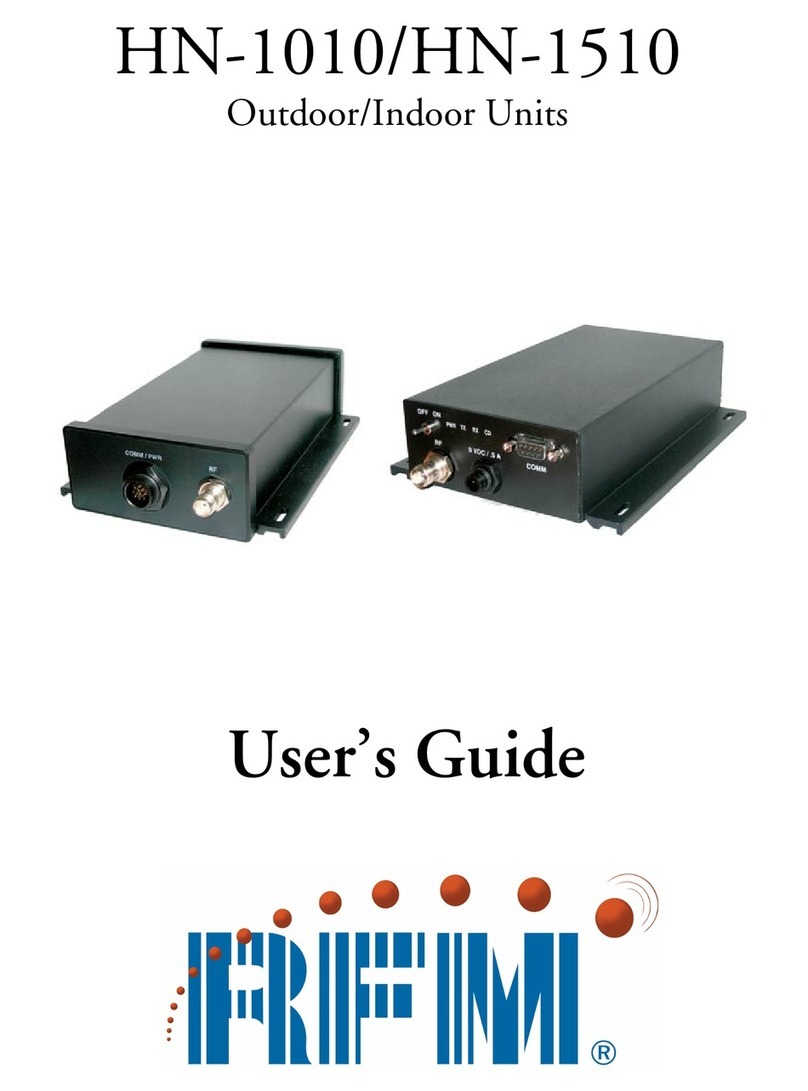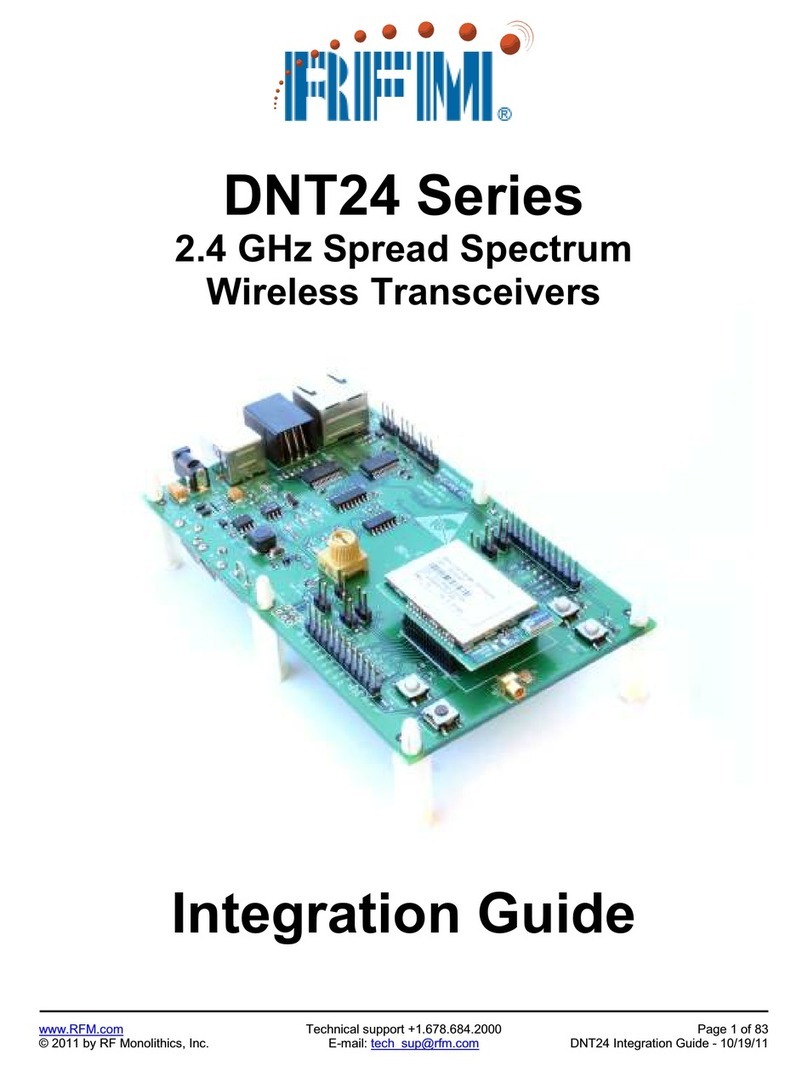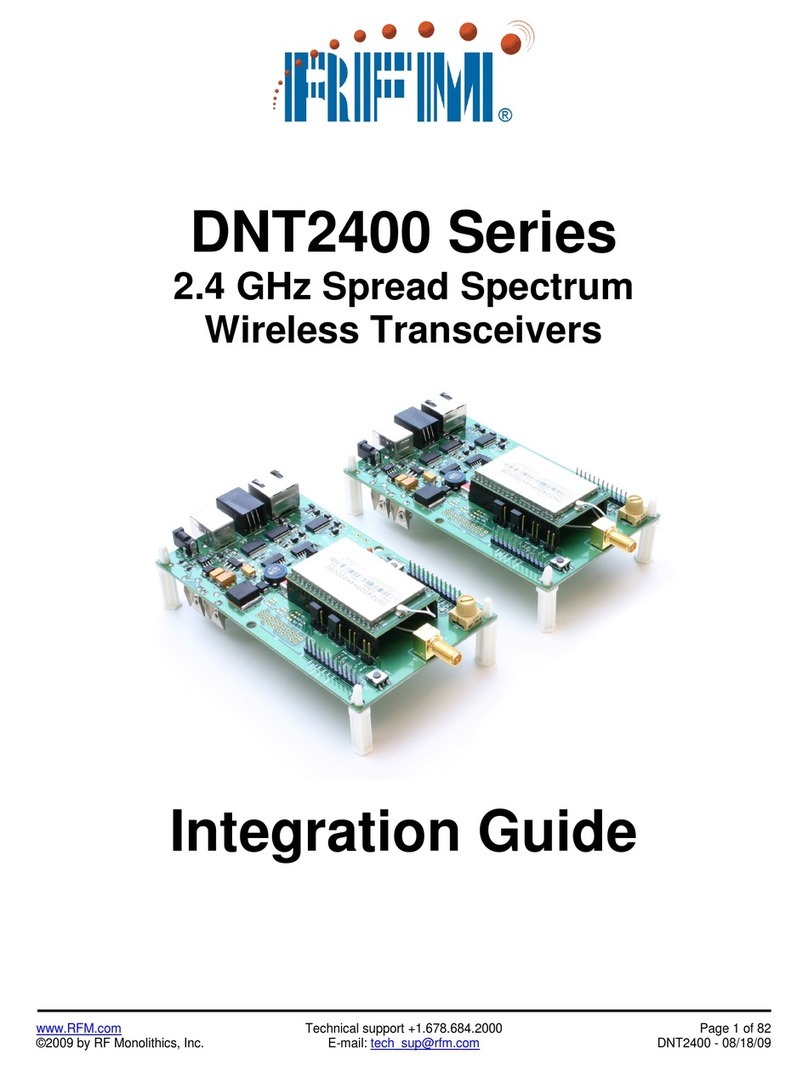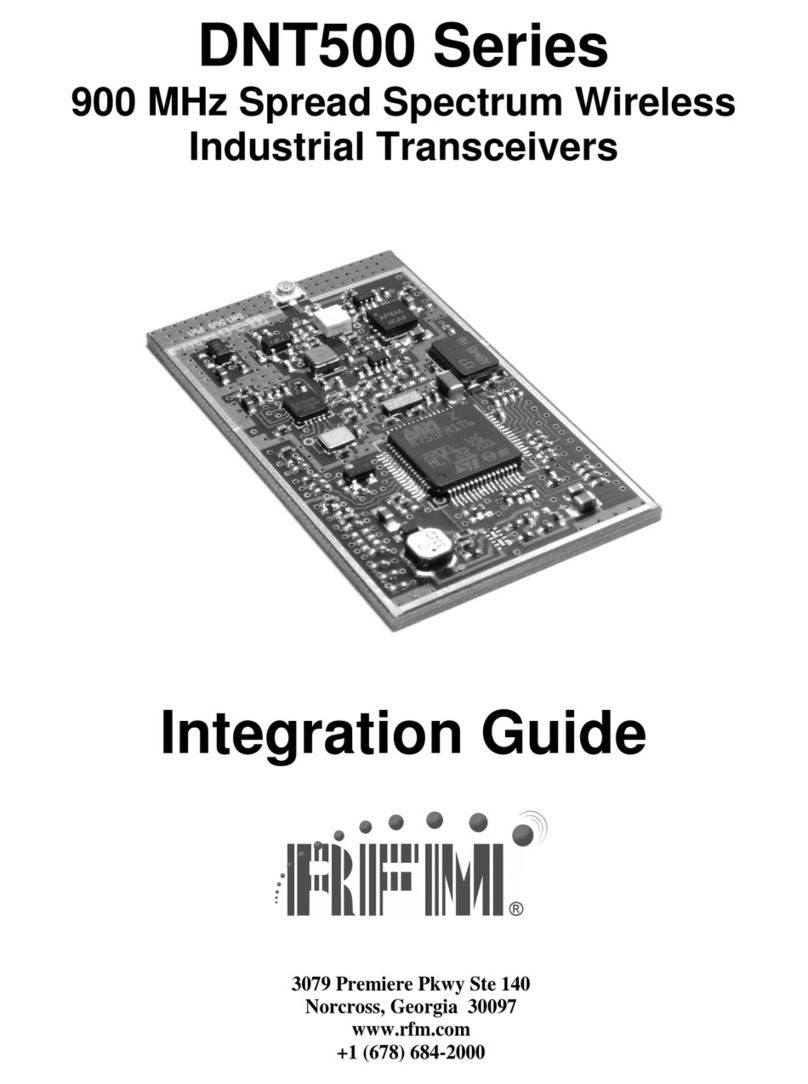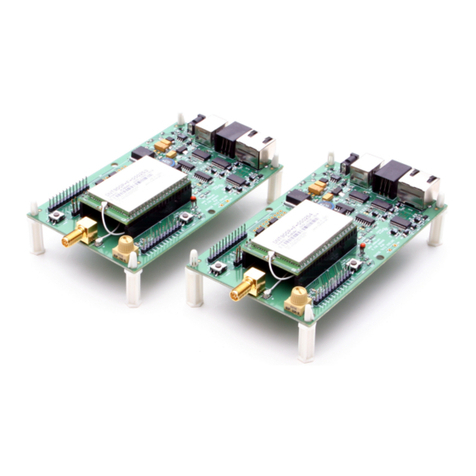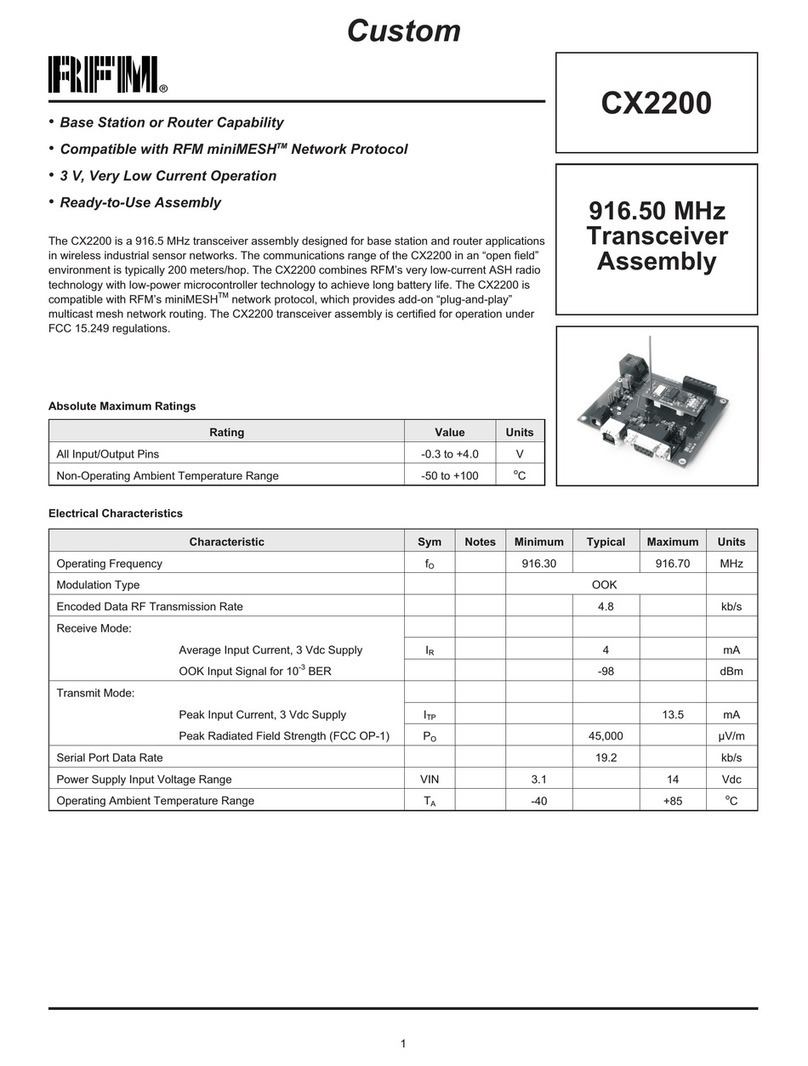
www.RFM.com Technical support +1.678.684.2000 Page 4 of 82
©
2010-2012
by
RF
Monolithics,
Inc.
E-mail:
[email protected] DNT90 Integration Guide - 05/10/12 Table of Contents
1.0 DNT90 Introduction .......................................................................................................................... 6
1.1 Why Spread Spectrum? ............................................................................................................ 6
1.2 Frequency Hopping versus Direct Sequence............................................................................ 7
2.0 DNT90 System Overview................................................................................................................. 8
2.1 Point-to-Point Systems .............................................................................................................. 8
2.2 Point-to-Multipoint Systems....................................................................................................... 9
2.3 Store-and-Forward Systems...................................................................................................... 9
2.4 RF Channel Access................................................................................................................. 10
2.5 DNT90 Addressing .................................................................................................................. 11
2.6 Network Linking and Slot Registration .................................................................................... 11
2.6.1 Fast Linking Techniques ................................................................................................... 12
2.7 Transparent and Protocol-formatted Serial Data..................................................................... 12
3.0 DNT90 Application Interfaces ........................................................................................................ 13
3.1 Serial Ports .............................................................................................................................. 13
3.2 SPI Port ................................................................................................................................... 13
3.3 Digital I/O ................................................................................................................................. 16
3.4 Analog I/O................................................................................................................................ 16
3.5 I/O Event Reporting and I/O Binding ....................................................................................... 17
4.0 DNT90 System Configuration ........................................................................................................ 18
4.1 Configuration Parameters........................................................................................................ 18
4.2 Configuring a Basic Point-to-Point System ............................................................................. 18
4.3 Configuring a Basic Point-to-Multipoint System ...................................................................... 18
4.4 Configuring a Customized Point-to-Point or Point-to-Multipoint System................................. 19
4.5 Configuring a Store-and-Forward System............................................................................... 20
4.6 Slot Buffer Sizes, Number of Slots, Messages per Hop and Hop Duration ............................ 21
5.0 DNT90 Application Interface Configuration.................................................................................... 23
5.1 Configuring the Serial Port ...................................................................................................... 23
5.2 Configuring the SPI Port.......................................................................................................... 24
5.3 Configuring Digital I/O ............................................................................................................. 24
5.4 Configuring Analog I/O ............................................................................................................ 24
5.5 Configuring I/O Event Reporting and I/O Binding.................................................................... 25
5.6 Configuring Sleep Mode .......................................................................................................... 26
6.0 DNT90 Hardware ........................................................................................................................... 27
6.1 Electrical Specifications........................................................................................................... 28
6.2 Module Pin Out........................................................................................................................ 29
6.3 Antenna Connector.................................................................................................................. 30
6.4 Power Supply and Input Voltages ........................................................................................... 31
6.5 ESD and Transient Protection ................................................................................................. 31
6.6 Interfacing to 5 V Logic Systems............................................................................................. 31
6.7 Mounting and Enclosures ........................................................................................................ 31
6.8 Labeling and Notices ............................................................................................................... 32
7.0 DNT90 Protocol-formatted Messages............................................................................................ 33
7.1 Protocol Formats ..................................................................................................................... 33
7.2 Message Types ....................................................................................................................... 33
7.3 Message Format Details.......................................................................................................... 34






